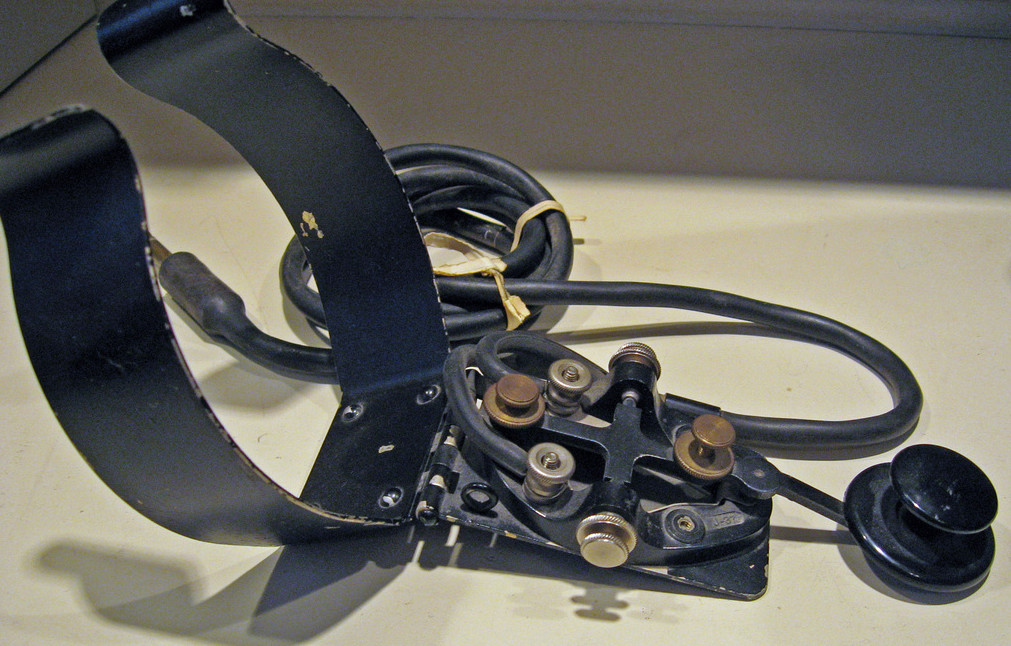I initially set out to learn Morse code because it was required to upgrade to General. After returning to the States from overseas in early 2005, I knew I wanted to upgrade my license and start working HF. To upgrade I needed to pass the 5 wpm Element 1 Morse code exam. I really did not have a great interest in learning Morse code: digital modes and SSB seemed like enough. So I went to Code Quick and purchased their program of learning Morse. Code Quick uses sound-a-likes to associate Morse code letters with a short word combination and graphic image. Example: for the letter U, the Morse is dit-di-dah. Code Quick’s sound-a-like was “kiss-a-ewe.” The rhythm of the syllable of the sound-a-like matches the rhythm of the Morse. Great idea, right? I can credit Code Quick for getting me to where I needed to be to pass Element 1. I was now on HF and making contacts. Life was good.
After a few months of SSB and PSK-31 contacts (do you remember PSK-31? It was all the rage back in the aughts). Adjacent to the PSK-31 I would heard the chirping of Morse code. I bought a Bencher paddle and a MFJ paddle with a built in keyer. Also picked up a Logikit CMOS 4 Morse Code Keyer.
Frustrated with my abilities to engage in any real QSOs, I took advantage of my local clubs Morse code class. The gentlemen who were running it said we needed to start with straight keys, not paddles. After we had learned the code, built up speed, we could use a paddle. They did not explain why. I stuck with the paddle. I got one of the MFJ-418 Pocket Morse Code tutor. I never got into a habit of regular practice. I was able to complete a QSO now and again, but it was the other side doing the heavy lifting. I could send pretty well with a paddle. I relied on Fldigi to help me understand what the other station was sending. In short, I was making very little progress.
Time was rolling by. I stuck with the paddle. When I was in Korea I participated in my first CW contest. I used the Logikit CMOS keyer along with a paddle. It really was a push-button affair, not relying on any real skill.
In the fall of 2015 I purchased Dr. Jessica Parks’ Skilman Introduction to Morse Code. Audio CD based, Skilman incorporates copying and sending. She also is explicit about practice occurring where you actually intend to use the code. Replicate the conditions in which you plan to use the skill you are practicing – that makes sense. I also started using another Morse course by K7QO. He emphasized using a notebook for practice sessions.
At this point I had completed my certification as an elementary school teacher, well versed in various theories supporting educational practice. Some specific ideas from my training stood out. One was automaticity: the quality or fact of being performed involuntarily or unconsciously, as a reflex, innate process, or ingrained habit. This can be most recognized in learning the multiplication/division tables. I had seen students be much more success with learning long division when they had memorized the multiplication/division tables to the point where their recall was automatic…. no thought involved, just immediate recall. Circling back to Code Quick – it prevents any ability to immediately recall Morse code characters as the sound-a-likes introduce a three step process: (a) hear the code, (b) associate with sound-a-like, (c) and then write the Morse character. Code Quick prevents automaticity.
The other theory is kinesthetic learning: combing physical movement with cognitive processing. And then it clicked… the straight key. Unlike a paddle, the straight key requires muscle memory to form each and every Morse code character. The formation of each character then becomes a seamless process between muscle and brain.
I combined these two theories of automaticity and kinesthetic learning along with Skilman and K7QOs programs. I maintained a practice notebook and always conducted my practice in front of my rig, using the rig’s practice oscillator – replicating the conditions I would use when actually operating. Skilman combined copying code along with sending, the perfect combination of automaticity and kinesthetic learning.
I was frustrated when trying to find QSOs and constantly bumping into the SKCC crowd. Who were these fanatics? While having a SKCC number, I was using a paddle. If I switched to a straight key, not only would I be working the kinesthetic portion of the Morse connection, I would have the opportunity to make more contacts. More contacts = more real world practice. Amazingly enough, I started making real progress. At no time could I ever commit anything beyond thirty minutes a day to practice. Eventually I got to the point with Skilman that I could copy and send around 7 wpm without issue. I was able to get on air and make QSOs with those willing to slow down a bit.
I turned to Gordon West WB6NOA’s 5-16 wpm Morse code speed builder course. About half way through at around 10 wpm, I became tripped up by numbers and punctuation. Morse Code Ninja was the next step. I needed to bump up my wpm. Morse Code Ninja uses Farnsworth: learning the character sounds at a moderately fast speed by increasing the gaps between the characters and words to give more recognition time. Going through at 20 wpm with 10 wpm Farnsworth allowed me to work on both speed and numbers/punctuation. Then I moved to 25 wpm with 10 wpm Farnsworth spacing.
I could now get on air and can hand copy about 12-15wpm, depending on if they added any additional spacing between letters. Back to WB6NOA, I could still make forward progress. At last I was no longer internally throwing in the Quick Code extra steps of processing sound-a-likes. The increased speed of Morse Code Ninja got me to stop counting dots for numbers, learning the sound instead – not thoughts in between, just sound to hand writing down the character. I still have a long ways to go. My goal is to be comfortable at copying and sending at 20 wpm without any additional spacing and to begin to copy words instead of characters. At this point, my straight key sending is trailing behind my copying speed. I am ok with that. The straight key speed will come. I do not have plans to switch back to paddle any time soon and I want to make sure my straight key sending is as near perfect as possible. Accuracy transcends speed.
Here are my lessons learned for learning Morse code:
- Use a straight key (see automaticity and kinesthetic learning)
- Combine the initial learning of the code with copying and sending (see Skilman)
- Get on the air as much as possible
- Use a mix of resources to consistently push yourself outside of your comfort zone
- Practice should involve sending as well as copying code
- Conduct your practice sessions where you are going to actually use the code
- Use a notebook for all your practice and on air copying
Many people (CWOps?) would disagree with the method and the recommendations I provide above. I do not disagree with those who want to only head copy code and use a paddle. I think that road works well for those who are really interested in contesting. I’m not interested in contesting. Those who head copy only lack the ability to use Morse for anything beyond causal QSOs.
The journey continues.
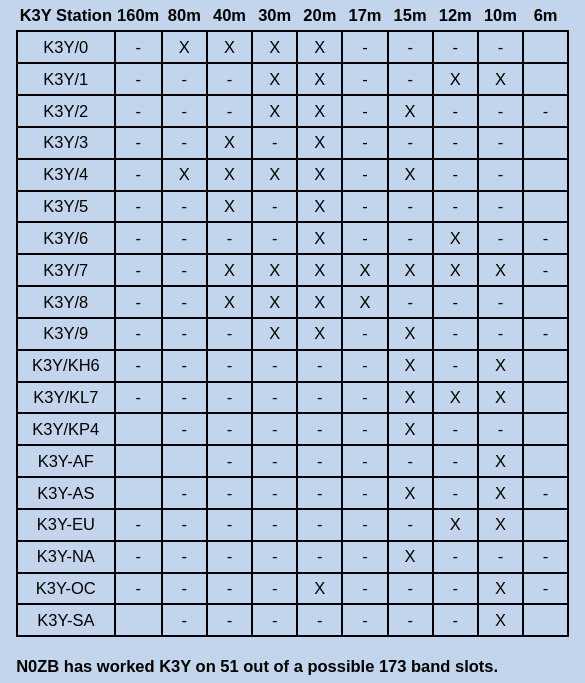

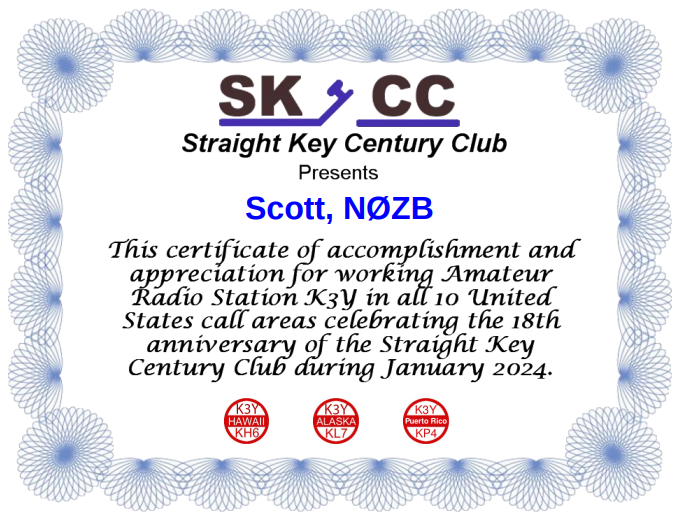
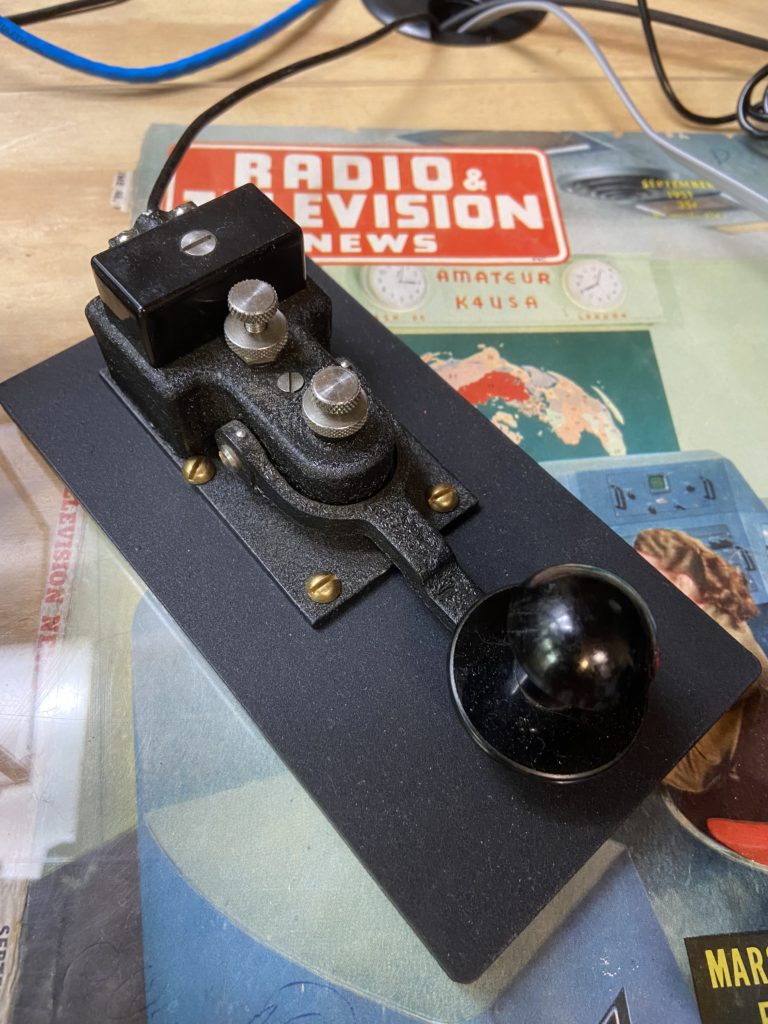
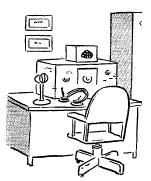 The big news, we finally completed some antenna maintenance. A few years back I hung a dipole up in the trees on the north side of the house. The weather took its toll. The line holding the center point had disintegrated, dropping the middle about ten feet. The east leg also lost its anchor and was resting on some branches. A sad situation.
The big news, we finally completed some antenna maintenance. A few years back I hung a dipole up in the trees on the north side of the house. The weather took its toll. The line holding the center point had disintegrated, dropping the middle about ten feet. The east leg also lost its anchor and was resting on some branches. A sad situation.